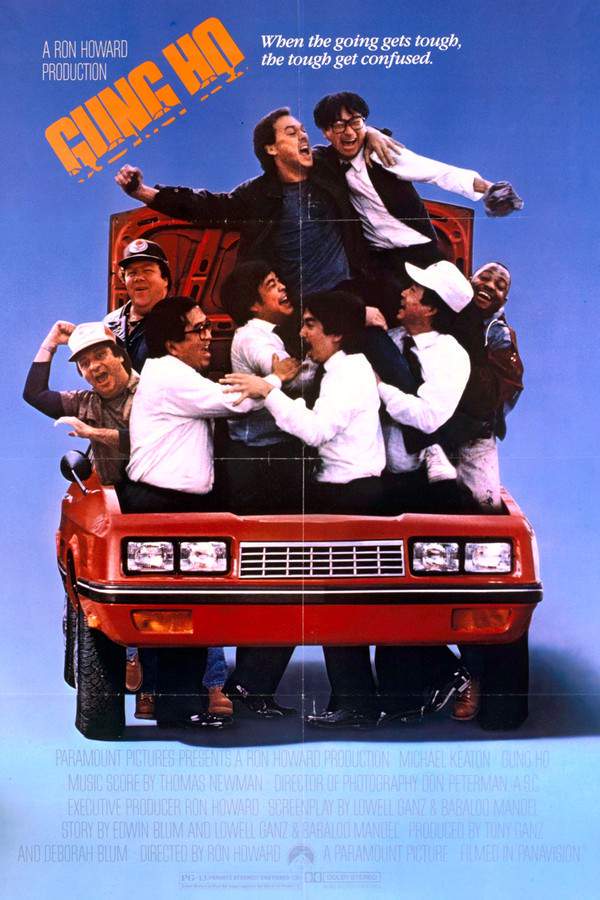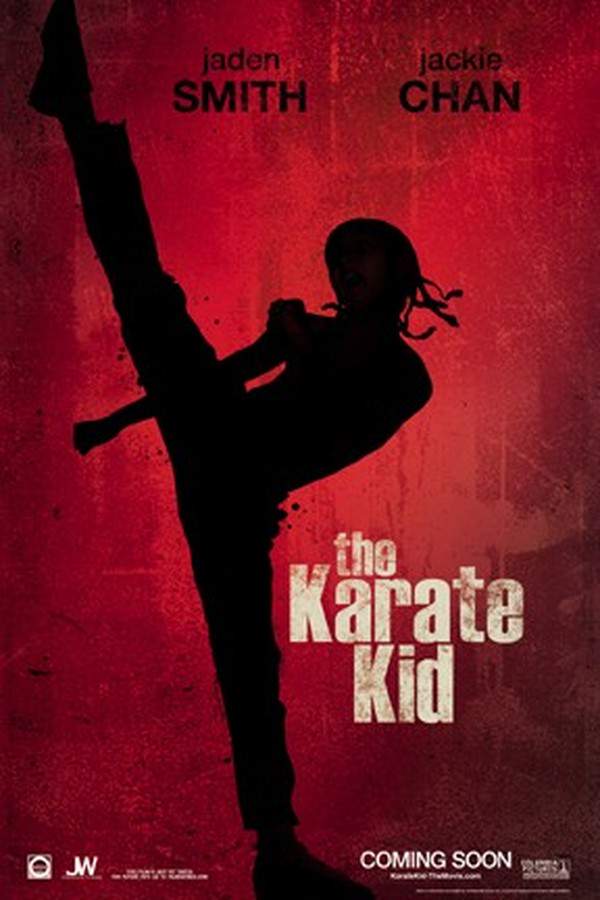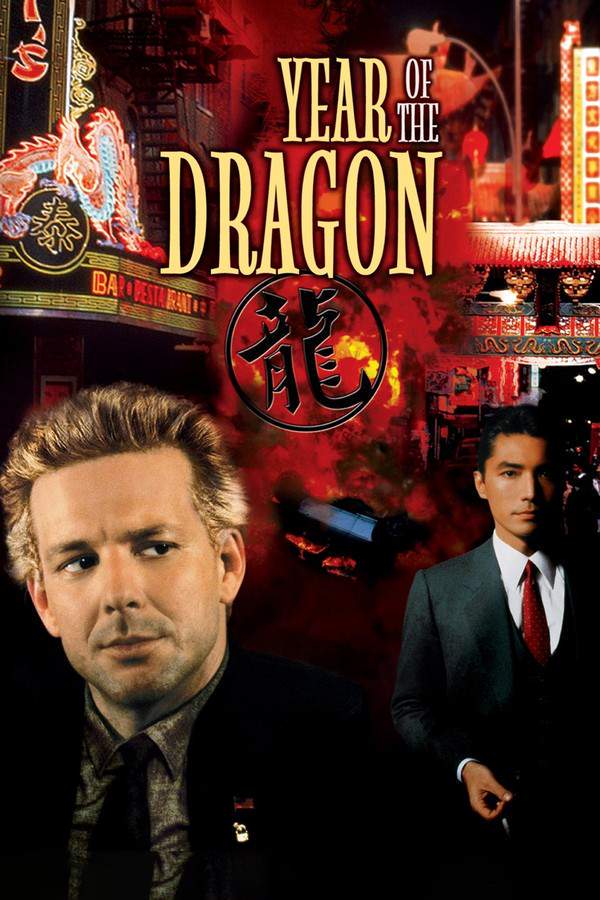Gung Ho 1986

When an American auto plant faces closure, a Japanese company takes over, implementing new and innovative management styles. Factory worker Hunt Stevenson finds himself caught between his colleagues’ skepticism and the unfamiliar corporate culture. He must learn to adapt and bridge the gap between American work ethic and Japanese business practices to save the plant and the jobs of everyone involved.
Does Gung Ho have end credit scenes?
No!
Gung Ho does not have end credit scenes. You can leave when the credits roll.
Meet the Full Cast and Actors of Gung Ho
Explore the complete cast of Gung Ho, including both lead and supporting actors. Learn who plays each character, discover their past roles and achievements, and find out what makes this ensemble cast stand out in the world of film and television.
External Links and Streaming Options
Discover where to watch Gung Ho online, including streaming platforms, rental options, and official sources. Compare reviews, ratings, and in-depth movie information across sites like IMDb, TMDb, Wikipedia or Rotten Tomatoes.
Ratings and Reviews for Gung Ho
See how Gung Ho is rated across major platforms like IMDb, Metacritic, and TMDb. Compare audience scores and critic reviews to understand where Gung Ho stands among top-rated movies in its genre.

48
Metascore
6.4
User Score


33%
TOMATOMETER

46%
User Score

6.3 /10
IMDb Rating

60
%
User Score
Take the Ultimate Gung Ho Movie Quiz
Challenge your knowledge of Gung Ho with this fun and interactive movie quiz. Test yourself on key plot points, iconic characters, hidden details, and memorable moments to see how well you really know the film.
Gung Ho Quiz: Test your knowledge about the cultural clash and comedic struggles depicted in the film Gung Ho.
What does Hunt Stevenson aim to revive in his hometown?
The bakery
The automobile factory
The furniture store
The textile mill
Show hint
Full Plot Summary and Ending Explained for Gung Ho
Read the complete plot summary of Gung Ho, including all major events, twists, and the full ending explained in detail. Explore key characters, themes, hidden meanings, and everything you need to understand the story from beginning to end.
In a small town in rural Pennsylvania, the automobile factory has faced an economic downturn, remaining shut for a staggering nine months. However, hope arises when a Japanese corporation, Assan Motors, acquires the factory but requires convincing to resume operations. Enter Hunt Stevenson, played by Michael Keaton, who ventures to Japan to present a compelling case to Assan’s management. His efforts lead to a team from Japan traveling to America, resulting in the factory’s reopening, albeit with significantly lower wages for the workers than before its closure. Despite this setback, Hunt is celebrated as a hero for persuading management to take action.
As the factory commences its operations, a profound culture clash ignites. The Japanese management imposes strict regimens and productivity expectations, far exceeding what the American workers are accustomed to. Unpaid overtime becomes the norm as the management prioritizes output above all else, showing little concern for the workers’ well-being. Tensions bubble over, and the relationship between the workers and management turns increasingly adversarial. Serving as a liaison, Hunt attempts to ease tensions, yet his efforts prove futile when an incident during a company baseball game escalates things further, resulting in a worker purposefully colliding with a Japanese manager.
As the situation grows dire, Japanese management considers shuttering the factory unless Hunt can guarantee that they can replicate the output of a top-performing Japanese plant, specifically producing 15,000 automobiles in a month. This claim elicits a raised eyebrow from the management, but they ultimately agree that if Hunt’s team achieves this target, not only will the factory remain operational, but wages would also return to their prior levels. Conversely, failing to meet this production standard means the factory’s closure and no raises for the workers.
Hunt shares the news with the workers, but they respond with skepticism. To placate them, he erroneously suggests that a smaller raise would kick in if they produce 13,000 automobiles. The workforce, albeit reluctantly, commits to the lofty goal, yet after exhaustive hours that include weekends, they arrive at a conclusion: the target of 15,000 feels insurmountable, prompting them to pursue the lesser raise instead. After reaching the 13,000 mark, the workers decide to protest against management in the face of a disagreement. Now, Hunt finds himself in a compromising position, needing to confess to the town that he has committed to 15,000 cars, and failing to achieve this would have devastating economic consequences for the community. His reputation swiftly shifts from hero to scapegoat, inciting fury among his co-workers.
However, resilience kicks in as the team rallies together to address their differences with the Japanese management before the senior executive from Japan visits for a factory inspection. While they may have fallen short of their ambitious 15,000 goal, the Japanese executive is pleasantly surprised by the newfound camaraderie exhibited by both the American and Japanese workers. Appreciating the spirit of collaboration, he decides to keep the factory open and sanction full raises, setting a foundation for mutual understanding and cooperation going forward. Ultimately, both management and workers reach an agreement: management will ease their demanding standards and improve pay, while the workers commit to being more compliant and productive.
Uncover the Details: Timeline, Characters, Themes, and Beyond!

Coming soon on iOS and Android
The Plot Explained Mobile App
From blockbusters to hidden gems — dive into movie stories anytime, anywhere. Save your favorites, discover plots faster, and never miss a twist again.
Sign up to be the first to know when we launch. Your email stays private — always.
Watch Trailers, Clips & Behind-the-Scenes for Gung Ho
Watch official trailers, exclusive clips, cast interviews, and behind-the-scenes footage from Gung Ho. Dive deeper into the making of the film, its standout moments, and key production insights.
Cars Featured in Gung Ho
Explore all cars featured in Gung Ho, including their makes, models, scenes they appear in, and their significance to the plot. A must-read for car enthusiasts and movie buffs alike.
Gung Ho Themes and Keywords
Discover the central themes, ideas, and keywords that define the movie’s story, tone, and message. Analyze the film’s deeper meanings, genre influences, and recurring concepts.
Gung Ho Other Names and Titles
Explore the various alternative titles, translations, and other names used for Gung Ho across different regions and languages. Understand how the film is marketed and recognized worldwide.
Similar Movies To Gung Ho You Should Know About
Browse a curated list of movies similar in genre, tone, characters, or story structure. Discover new titles like the one you're watching, perfect for fans of related plots, vibes, or cinematic styles.
Quick Links: Summary, Cast, Ratings, More

What's After the Movie?
Not sure whether to stay after the credits? Find out!
Explore Our Movie Platform
New Movie Releases (2026)
Famous Movie Actors
Top Film Production Studios
Movie Plot Summaries & Endings
Major Movie Awards & Winners
Best Concert Films & Music Documentaries
Movie Collections and Curated Lists
© 2026 What's After the Movie. All rights reserved.










































